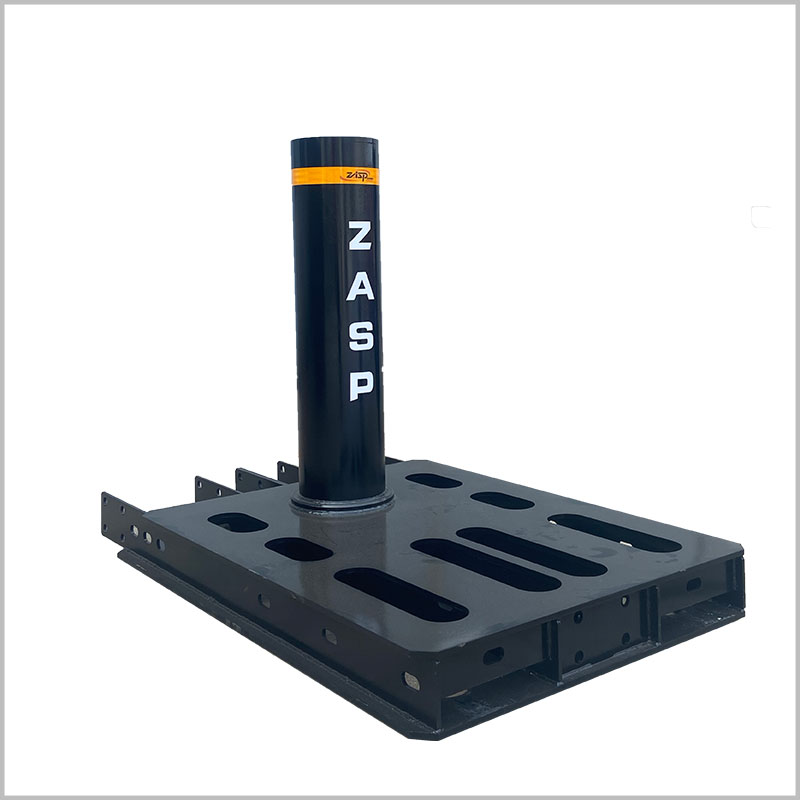Shallow mount and deep mount bollards serve similar purposes in providing security and traffic control, yet they differ significantly in their installation method and application. Exploring the advantages and disadvantages of each can provide insight into why one might choose shallow mount over deep mount bollards.
Shallow Mount Bollards:
Advantages:
Ease of Installation: Shallow mount bollards are relatively easier to install compared to their deep mount counterparts. They require less excavation, reducing labor costs and installation time. This makes them a preferred choice for projects with tight timelines or budget constraints.
Surface Preservation: Since shallow mount bollards require minimal excavation, they cause less disruption to the surrounding surface. This makes them ideal for installations in areas where preserving the aesthetics of the landscape or pavement is important, such as historic sites, pedestrian zones, or architectural landmarks.
Flexibility: Shallow mount bollards offer greater flexibility in terms of relocation or repositioning. Their installation process is less intrusive, allowing for easier removal and reinstallation if the need arises. This makes them suitable for temporary installations or situations where future modifications may be required.
Accessibility: Shallow mount bollards are typically installed closer to the surface, making them more accessible for maintenance and repairs. This accessibility can reduce maintenance costs and downtime associated with servicing the bollards, as technicians can easily access them without extensive excavation.
Disadvantages:
Limited Impact Resistance: Shallow mount bollards may have reduced impact resistance compared to deep mount bollards. Since they are installed closer to the surface, they may be more susceptible to damage from vehicular impacts or attempted removal. This can compromise their effectiveness in high-security applications where robust protection is required.
Lower Load-Bearing Capacity: Shallow mount bollards may have limited load-bearing capacity, especially in applications where heavy-duty security measures are necessary. They may not be suitable for preventing vehicular intrusion in high-risk environments or areas with heavy traffic flow.
Deep Mount Bollards:
Advantages:
Enhanced Security: Deep mount bollards offer superior security and impact resistance compared to shallow mount bollards. Their deeper installation provides greater stability and structural integrity, making them more effective at preventing unauthorized vehicular access or ramming attacks.
High Load-Bearing Capacity: Deep mount bollards are designed to withstand significant force and impact, making them suitable for high-security applications such as government buildings, military installations, or critical infrastructure sites. Their robust construction ensures they can withstand repeated attempts at breach or sabotage.
Long-Term Durability: Deep mount bollards are built to withstand the test of time, with durable materials and construction techniques that ensure longevity and reliability. They require minimal maintenance and are less susceptible to damage from environmental factors or wear and tear.
Disadvantages:
Complex Installation: Deep mount bollards require extensive excavation and foundation work, which can increase installation time and cost. The process may also disrupt the surrounding area and require additional permits or approvals, especially in urban or densely populated areas.
Limited Flexibility: Once installed, deep mount bollards are more difficult to relocate or reposition compared to shallow mount bollards. Their deep foundation makes it challenging to make changes or modifications without significant effort and expense.
Conclusion:
The choice between shallow mount and deep mount bollards ultimately depends on the specific requirements of the project, including security needs, budget constraints, and aesthetic considerations. While shallow mount bollards offer advantages in terms of ease of installation, surface preservation, and flexibility, deep mount bollards provide superior security, impact resistance, and long-term durability. By carefully evaluating these factors, stakeholders can select the most suitable option to meet their security and traffic control objectives.


